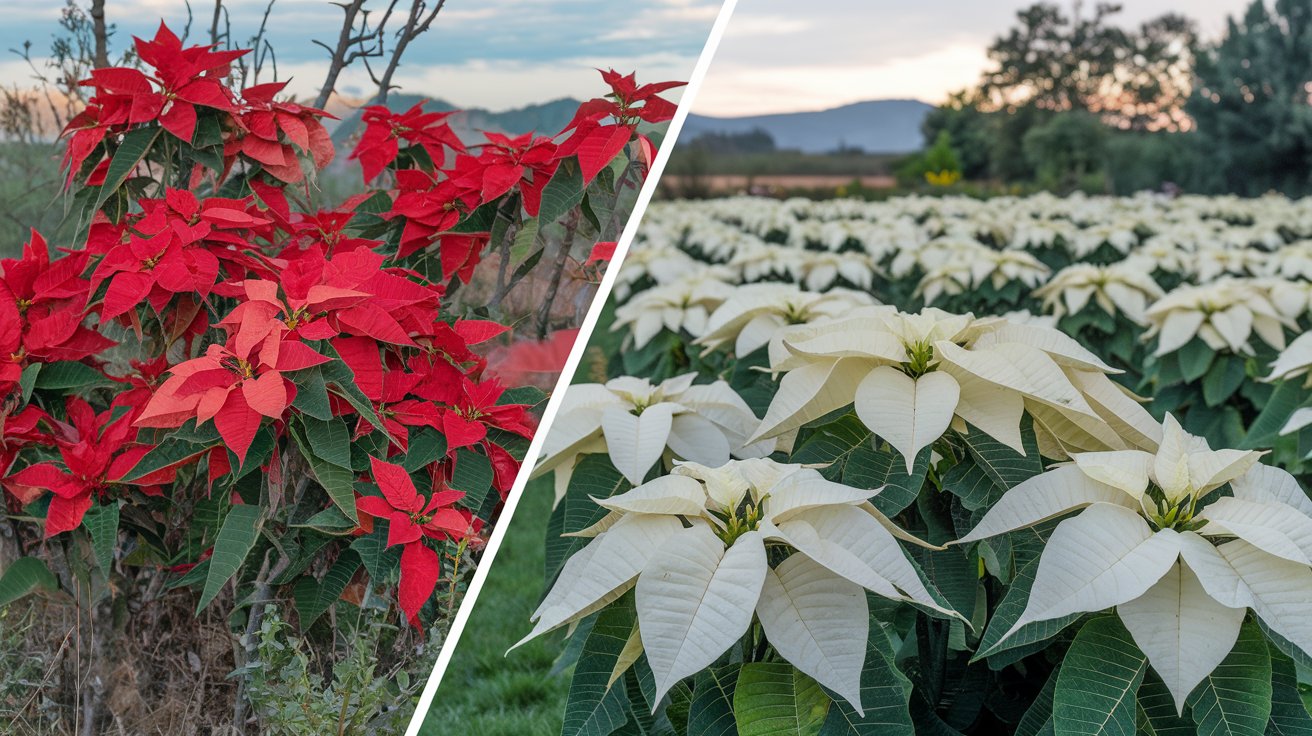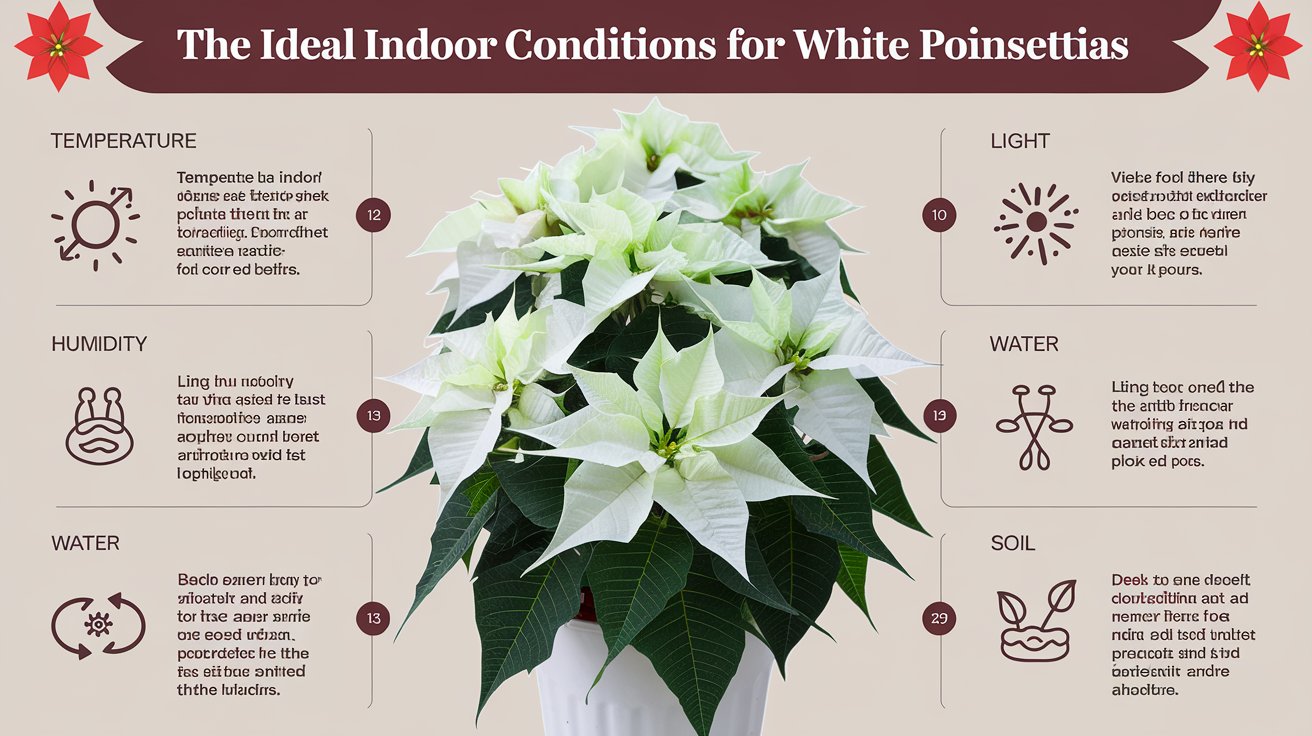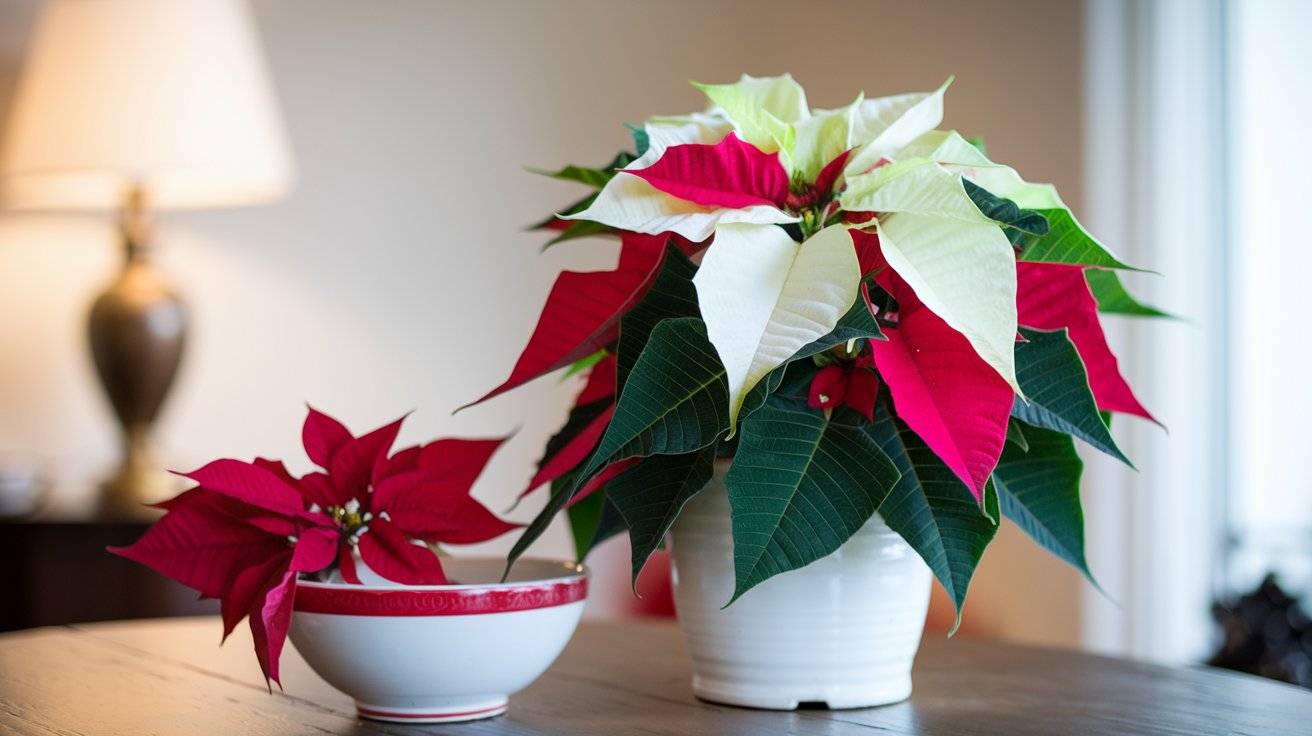Table of Contents
Introduction
The White Poinsettia Plant is a striking variation of the red poinsettia that is traditional, is becoming more popular in recent times. The plant is renowned for its sophisticated bracts that are snow-white and beautiful foliage, this plant is a great addition to add an elegant touch to your holiday decorations and even beyond. In this detailed guide, we’ll cover all you must learn about the white poinsettia starting with its history, to tips for care and innovative ways to display it.
1. Origins and the History of White Poinsettia Plant
The white poinsettia plant as its red counterpart is indigenous to Mexico. However, the white version is the result of meticulous breeding and selection
- Originating from Central America and Mexico
- The discovery was made by Joel Roberts Poinsett in 1828
- White varieties that have been developed by selective breeding
- The popularity of the genre grew in the late 20th century.

2. Botanical Specifications of White Poinsettias
Knowing the distinct characteristics of the white poinsettia plant can assist you in understanding and caring for them more effectively:
- Name of the scientific species: Euphorbia pulcherrima
- A member of the family spurge (Euphorbiaceae)
- “flowers” that are white “flowers” can actually be modified leaf known as bracts.
- True flowers are small yellow clusters of flowers in the center.
- The average height is 2-3 feet in pots, and up to 10 feet in their natural habitats
3. Different varieties of white Poinsettia Plant
There are a variety of cultivars of white poinsettias readily available.
- “White Christmas” The flowers are pure white along with deep green foliage
- “Whitestar” Whitestar: White bracts that are creamy with serrated edges
- “Snowcap”: Compact variety that has pure white bracts
- “Arctic White”: Bright white, large bracts
- “Silver Star White”: Bracts of white with an underlying pink
Each variety has its own distinct characteristics in regards to bract shape, size as well as overall look.
4. Indoors, White Poinsettias are growing
White poinsettias thrive in indoor spaces if they are properly cared for:
- Find a spot that is bright and has indirect sunlight
- Keep temperatures between 65 and 70degF (18-21degC)
- Keep out drafts from doors, windows, or heating vents
- Use well-draining potting soil
- The top of the soil is dry
- Fertilize every month with an adequate water-soluble fertilizer

5. The Outdoor Culture of White Poinsettia Plant
In climates that are suitable white poinsettia plant are able to be grown outside:
- suitable for USDA Zones 9-11 of the USDA Hardiness Index.
- Plant in a place that provides only a little shade
- Guard yourself from fierce winds and the harsh afternoon sun.
- Make sure the soil is well-drained and has organic matter
- The water is drenched but rarely.
- Cut back in winter, or in early spring to keep the shape
6. Promoting White Poinsettias to be rebloom
In order for your white poinsettia plant to bloom again requires a certain amount of attention:
- Beginning October 1, you can expect that you have 14 hours of total darkness each day.
- Keep this gentle routine for 6-8 weeks.
- Maintain constant temperatures of 65-70degF (18-21degC)
- Reduce the amount of water used and stop fertilizing during this time
- Continue normal care after bracts begin to begin to show color
7. Common Pests and Diseases that affect White Poinsettia Plants
Although generally durable white poinsettias may face some challenges:
- Whiteflies: Treat them with insecticidal soap or the oil of neem
- The spider mites increase the humidity and treat miticide If required
- Root Rot: Beware of excessive watering and ensure good drainage
- Leave spot removal: Pull out the affected leaves and increase air circulation
- Stem rot: Cut off the affected areas and cut down on the amount of watering
Regular inspection and regular maintenance can help prevent many problems with the white poinsettia plant.
8. White Poinsettias in Holiday Decor
White poinsettia plant are versatile design options.
- Use it as a centerpiece on Christmas tables
- Mix with red poinsettias to create an elegant Christmas look
- Wear it with gold or silver accents for a sophisticated display.
- Use them in the winter season for wedding flowers and bouquets
- Make a monochromatic display using other white flowers
9. All-year-round care for white Poinsettia Plant
With the proper care white poinsettias are able to be enjoyed even after the Christmas season:
- Gradually decrease the amount of water you use following the holidays.
- Prune down to 6-8 inches in the early spring.
- Repot the soil in a fresher state when new growth begins to appear.
- Take a walk outside for the this summer (in shade) in the event that the climate is suitable.
- Begin to prepare for reblooming this autumn
10. The environmental benefits of white Poinsettia Plants
White poinsettia plant provide more than just a beautiful appearance:
- Improve the quality of indoor air by eliminating pollutants
- Increase the humidity in dry indoor spaces
- Potential medicinal properties being studied
- They can be composted following their lives, reintroducing nutrients to the soil
- Cultivation supports sustainable agriculture practices
Frequently Answered Questions
- Q Do white poinsettias are toxic? A: While they are not poisonous white poinsettias may cause mild irritation when ingested. Make sure they are out of the reach of children and pets to avoid any risk.
- Q What is the length of time white poinsettias last? A: With proper maintenance, white poinsettias are able to last for up to 4-6 weeks during flowering time and can be used as house plants all year long.
- Q Do white poinsettias can be planted outdoors? A: Yes In USDA Zones 9-11 of Hardiness, white poinsettias are able to be planted outside. In warmer climates, they must be planted as indoor plants.
- Q What is the best time to take care to water the white poinsettia plant? A: Water your white poinsettia once the soil’s top inch appears dry. This is usually at least once or twice per week according to the conditions of the environment.
- Q What is the reason why the leaves on my white poinsettia turning brown? A: Yellowing leaves may be due to excessive watering, poor drainage or deficiencies in nutrient levels. Make sure you are watering properly and think about fertilizing with a balanced water-soluble fertilizer.
Conclusion
The white poinsettia plant is an original and stylish alternative to the red variety. With its striking appearance and the possibility of a wide range of decorations it’s no wonder this plant is an essential part of decorations for the holidays and throughout the year. If you know what it needs and taking care of it properly you will be able to appreciate the beautiful white poinsettias in the garden or at home for many years to be.

